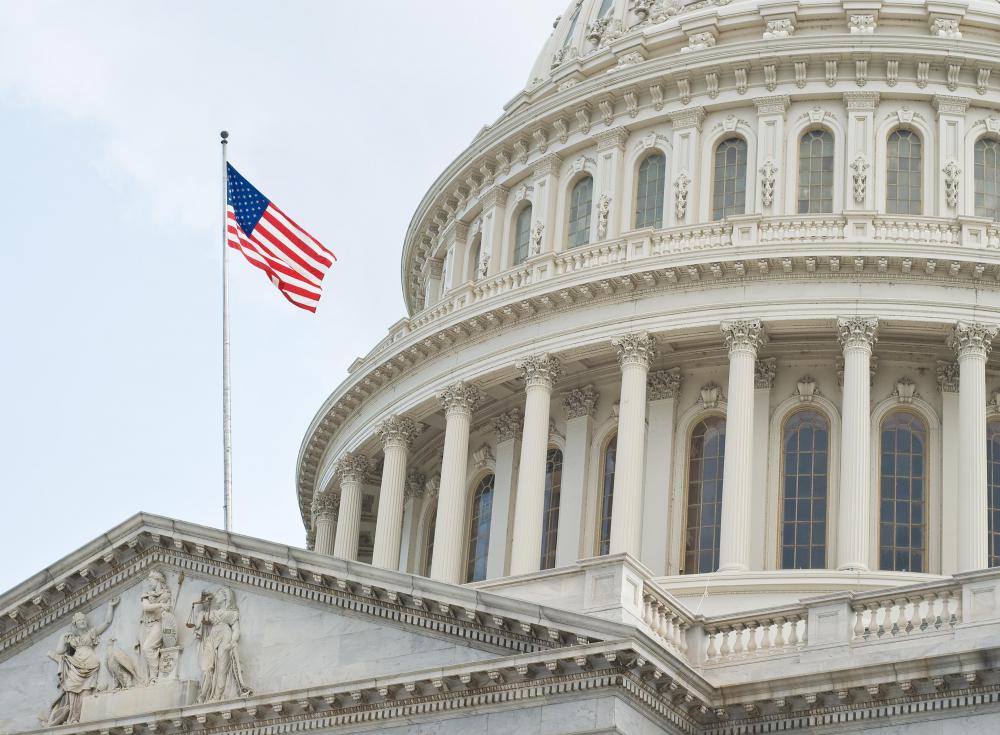At WiseGEEK, we're committed to delivering accurate, trustworthy information. Our expert-authored content is rigorously fact-checked and sourced from credible authorities. Discover how we uphold the highest standards in providing you with reliable knowledge.
What is the Banking Act of 1933?
U.S. President Franklin D. Roosevelt signed the Banking Act of 1933 in June of his first year in office at the height of the Great Depression. It was, and still is, one of American history's most high-impact pieces of financial-industry regulation. The act responded in two primary ways to widespread public fear that money held in banks was unsafe. First, it separated commercial banking and investment banking, under the premise that banks had previously risked too much of their commercial customers' deposits on stock-market gambles. Second, the Act created the Federal Deposit Insurance Corporation (FDIC) as a temporary agency, promising depositors that if an insured bank failed, qualifying money would be repaid.
Two years later, the Banking Act of 1935 established the FDIC as a permanent agency, with subsequent laws increasing the maximum insurable amount per account. The maximum amount was $250,000 US Dollars in 2010 and is expected to return to its former amount of $100,000 USD in 2014. The agency's existence is widely credited with bolstering consumer confidence and preventing repeats of the kind of mass withdrawals, or runs, that greatly hindered banks from recovering their footing after the stock market crash of 1929.

By contrast, the restrictions that the Banking Act of 1933 imposed to separate commercial banking and investment banking ultimately proved to be more controversial. Opponents argued, among other points, that American banks were losing market share to foreign financial institutions that were free of such restrictions and therefore readily able to offer a wider variety of services. The Gramm-Leach-Bliley Act of 1999 — introduced by Republican Sen. Phil Gramm of Texas and Republican Rep. Jim Leach of Iowa and signed by President Bill Clinton — repealed the separating restrictions. In December 2009 — as some thinkers blamed a stubborn economic downturn partly on the repeal of the Banking Act of 1933 — Republican Sen. John McCain of Arizona and Democratic Sen. Maria Cantwell of Washington introduced a bill to reinstate the separation of commercial banking and investment banking, but the idea remained controversial among both elected officials and the business community.

The Banking Act of 1933 should not be confused with the slightly earlier Emergency Banking Act of 1933, which allowed Roosevelt to declare a national banking holiday that shut banks down for inspection. Aiding clarity, the Banking Act of 1933 is better known as the Glass-Steagall Act. It was named for its sponsors, Democratic Sen. Carter Glass of Virginia and Democratic Rep. Henry B. Steagall of Alabama. Glass was a former Treasury secretary and founded the U.S. Federal Reserve System. Steagall chaired the House of Representatives' Banking and Currency Committee.
AS FEATURED ON:
AS FEATURED ON:












Discuss this Article
Post your comments